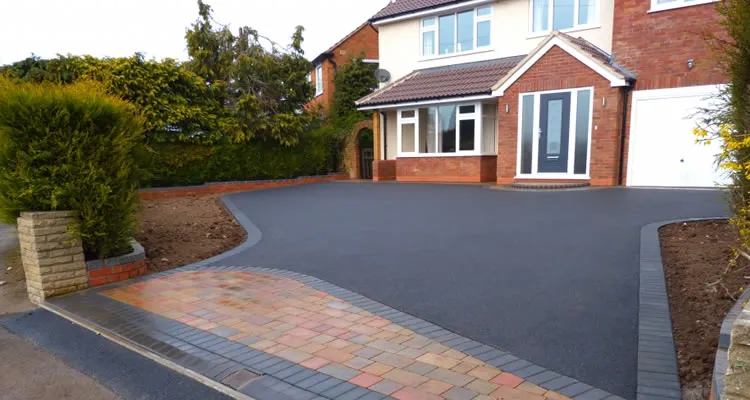A waterlogged lawn can be a significant problem for homeowners in Coventry, especially after heavy rainfall or prolonged wet conditions. Waterlogging occurs when the soil becomes saturated with water, preventing proper drainage and depriving your grass of the oxygen it needs. Not only does this affect the appearance of your lawn, but it can also lead to issues such as root rot, weed growth, and an overall unhealthy garden environment. One of the most effective ways to tackle this issue is by installing a soakaway system. In this article, we’ll guide you through how to solve waterlogged lawn soakaway in Coventry.
What is a Soakaway?
A soakaway is a drainage system designed to collect and disperse excess water into the ground. It works by providing a space for the water to infiltrate the soil gradually, rather than pooling on the surface. Typically, a soakaway consists of a trench or pit filled with gravel or stones, often incorporating a perforated pipe to help direct the water. The primary goal is to reduce surface water and prevent flooding, making it an ideal solution for waterlogged lawns.
Why Should You Consider a Soakaway for Your Waterlogged Lawn?
Waterlogged lawns are not only unsightly but also harmful to grass health. The standing water suffocates the roots, disrupts drainage, and leads to the growth of fungi, molds, and other unwanted pests. A soakaway provides several benefits:
- Improved Drainage: Soakaways help to alleviate the pressure caused by excess water by allowing it to seep away into the ground.
- Prevents Flooding: By redirecting water to a designated area, soakaways help to prevent water from accumulating on your lawn.
- Boosts Lawn Health: Proper drainage ensures that your grass gets the right balance of water and oxygen, supporting healthy root growth and a vibrant lawn.
How to Install a Soakaway for a Waterlogged Lawn in Coventry
Installing a soakaway is a relatively straightforward process, but it’s important to follow the right steps to ensure that it works effectively. Here’s how you can solve your waterlogged lawn issues in Coventry with a soakaway:
1. Assess the Problem Area
Start by identifying the areas of your lawn that are prone to waterlogging. Typically, low spots and areas with clay-heavy or compacted soil will accumulate water. Walk around your garden after a heavy rainfall and note the areas where water pools the most. These will be the prime spots for installing your soakaway.
2. Plan the Soakaway Location
Once you’ve identified the areas with the most water accumulation, plan the placement of your soakaway. Ideally, it should be located in a low-lying area of the lawn where water naturally collects, but far enough from your house, patios, or paths to avoid water flowing toward your home.
- Ensure that the soakaway is positioned at least 5 meters away from your property foundations to avoid water seeping into the house.
- It should also be placed away from any trees or shrubs, as roots can obstruct the drainage system.
3. Choose the Right Size for Your Soakaway
The size of your soakaway will depend on the size of the area you’re draining, the amount of water you’re dealing with, and the permeability of the soil. For a small garden or lawn, a simple trench soakaway may be sufficient. However, if you have a larger area or more severe waterlogging issues, you may need a larger pit or multiple soakaways.
- For small gardens: A trench soakaway with a perforated pipe may suffice.
- For larger areas: A deep soakaway pit filled with gravel or a combination of multiple trenches might be required.
4. Excavate the Soakaway
To install the soakaway, you will need to dig a trench or pit. Depending on the type of soakaway you’re installing, this can vary in depth and width:
- Trench Soakaway: If installing a trench soakaway, dig a trench around 1 meter deep and 30-40 cm wide.
- Pit Soakaway: For a pit soakaway, dig a hole around 1 meter deep and wide enough to accommodate the desired amount of gravel or stones (typically around 50-80 cm in diameter).
Ensure that the sides and bottom of the trench or pit are smooth to prevent water from pooling in any uneven spots.

5. Add Gravel or Stones
Once you’ve excavated the trench or pit, the next step is to add gravel or stones. Gravel helps facilitate water drainage and allows the water to move through the soil, instead of pooling. You should fill the trench or pit with 10-15 cm of gravel at the bottom, followed by larger stones and more gravel to ensure proper water flow. The more porous the material, the better the water will filter through.
For additional drainage, you can install a perforated pipe in the trench. The pipe will direct water toward the soakaway, helping to manage larger volumes of runoff. Ensure the pipe has a slight slope so that water can flow into the soakaway system.
6. Cover the Soakaway
After filling the trench or pit with gravel, cover the top with a geotextile fabric to prevent soil from clogging the gravel. Then, cover the fabric with a thin layer of topsoil or turf to blend it into the rest of the lawn. This will allow you to use the area as a normal part of your garden while keeping the soakaway system functional.
7. Test the System
After installation, it’s essential to test the system by watering the area or waiting for the next rainfall. Check if water is draining away as expected and ensure that no water pools on the surface. If necessary, adjust the positioning or size of the soakaway to improve its efficiency.
Maintenance Tips for Your Soakaway
Once your soakaway is in place, regular maintenance is essential to keep it functioning properly:
- Clear Debris: Check the soakaway regularly for debris or blockages. Remove any leaves, twigs, or soil that may have clogged the system.
- Inspect the Gravel: Over time, the gravel may become compacted or displaced. You should periodically check the condition of the gravel and top it up if needed.
- Avoid Heavy Traffic: Try not to compact the soil around the soakaway area, as this can reduce its effectiveness.
Final Thoughts
Installing a soakaway is an effective, eco-friendly solution to address waterlogged lawn issues in Coventry. By improving drainage, you’ll restore your lawn’s health, reduce flooding, and prevent long-term damage caused by standing water. Whether you tackle the installation yourself or hire a professional, a soakaway is a sustainable and low-maintenance solution that will help protect your garden and property for years to come.



